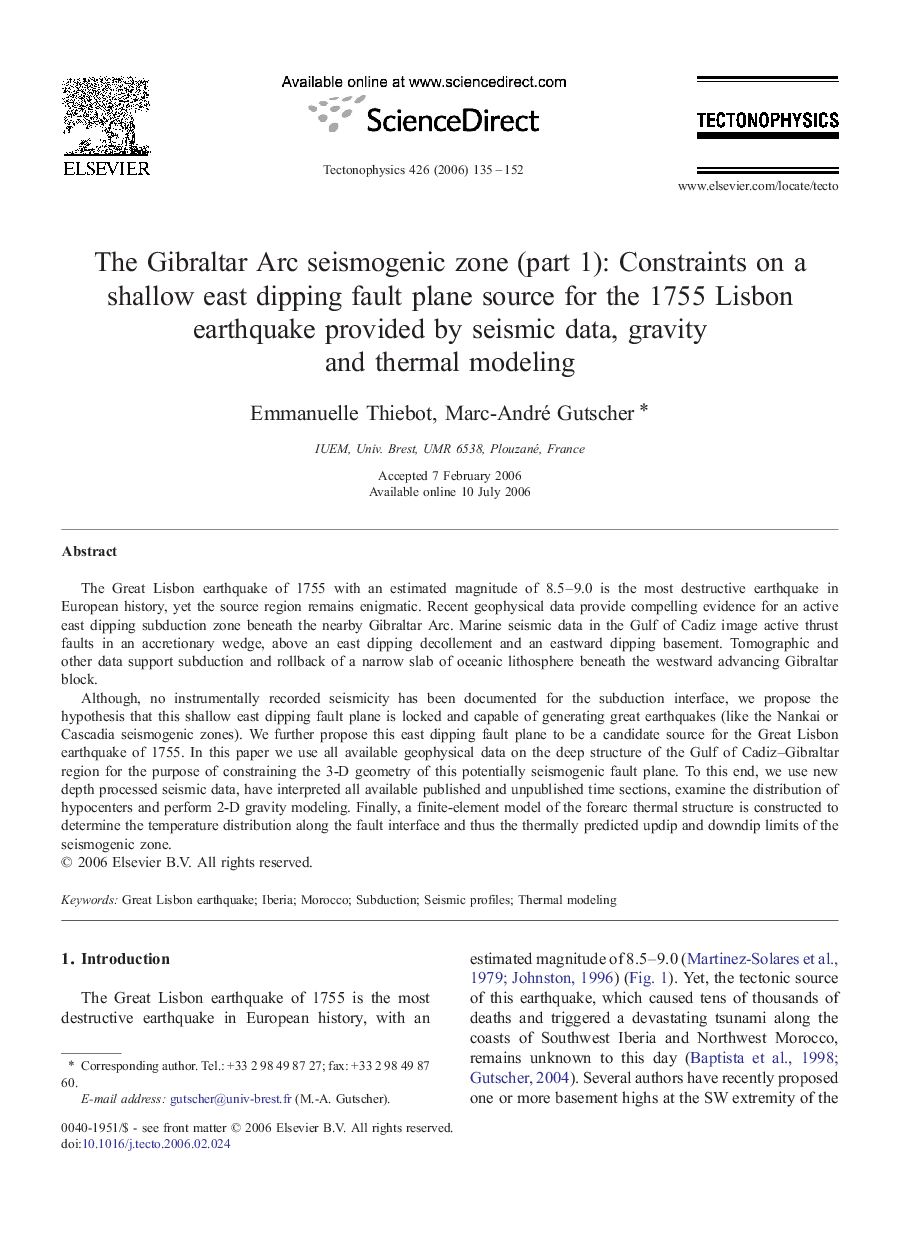| Article ID | Journal | Published Year | Pages | File Type |
|---|---|---|---|---|
| 4695065 | Tectonophysics | 2006 | 18 Pages |
The Great Lisbon earthquake of 1755 with an estimated magnitude of 8.5–9.0 is the most destructive earthquake in European history, yet the source region remains enigmatic. Recent geophysical data provide compelling evidence for an active east dipping subduction zone beneath the nearby Gibraltar Arc. Marine seismic data in the Gulf of Cadiz image active thrust faults in an accretionary wedge, above an east dipping decollement and an eastward dipping basement. Tomographic and other data support subduction and rollback of a narrow slab of oceanic lithosphere beneath the westward advancing Gibraltar block.Although, no instrumentally recorded seismicity has been documented for the subduction interface, we propose the hypothesis that this shallow east dipping fault plane is locked and capable of generating great earthquakes (like the Nankai or Cascadia seismogenic zones). We further propose this east dipping fault plane to be a candidate source for the Great Lisbon earthquake of 1755. In this paper we use all available geophysical data on the deep structure of the Gulf of Cadiz–Gibraltar region for the purpose of constraining the 3-D geometry of this potentially seismogenic fault plane. To this end, we use new depth processed seismic data, have interpreted all available published and unpublished time sections, examine the distribution of hypocenters and perform 2-D gravity modeling. Finally, a finite-element model of the forearc thermal structure is constructed to determine the temperature distribution along the fault interface and thus the thermally predicted updip and downdip limits of the seismogenic zone.
